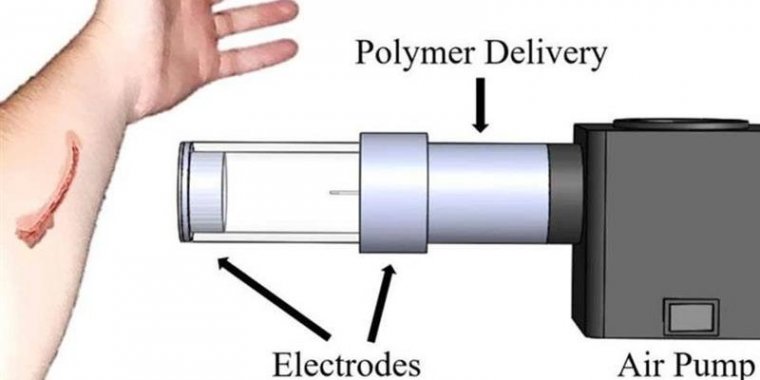| News / Science News |
Scientists Develop Spray Gun to Paint Bandages onto Wounds
Scientists have developed spray gun that uses a process called electrospinning to 'paint' on bandages with drug cocktails tailored to treat patients' wounds.

Scientists develop spray gun to paint bandages onto wounds. Image credit: tasnimnews.com
Spray-on bandages could help protect wounds and deliver life-saving drugs in far-flung places where immediate medical care is not available, according to a new study.
Using a technique called electrospinning, scientists created “bottled bandages” which spray a thin layer of fibres onto damaged skin like spraying paint on a wall. “It is the first demonstration of depositing the drug-delivering fibres directly onto a wound site safely,” said Lane Huston, author of the study.
By applying this spray paint-like mechanism, this device can be used to cover wounds and provide controlled drug release over time.
Electrospinning is used in other industries to wrap, filter and insulate various commercial products. However, it has previously used electricity at very high voltages that could be dangerous to human skin.
But now scientists have developed an electrospinning device with a smaller electric field that could safely deposit bandages onto skin, the study states.
Instead of using the voltage difference between the tool and a surface to deposit the fibres, the new device uses air to spray fibres onto the surface.
In spray painting, pressurised gas forces direct particles towards a surface, creating a sort of deposited material. Like spray painting, the device is used by directing its nozzle at the desired surface during operation, causing a fibre mat to be deposited onto that surface.
“The bandage material, as well as the drug used, can be chosen on demand as the situation warrants, making modular and adaptable drug delivery accessible in remote locations,” Huston said. (Tasnim News Agency)
YOU MAY ALSO LIKE





